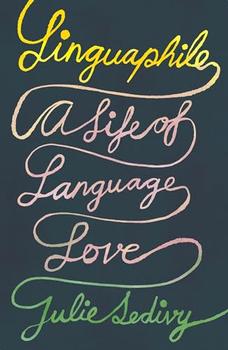
Images of Power from the Ancient World to the Modern
by Mary Beard
From the bestselling author of SPQR: A History of Ancient Rome, the fascinating story of how images of Roman autocrats have influenced art, culture, and the representation of power for more than 2,000 years.
What does the face of power look like? Who gets commemorated in art and why? And how do we react to statues of politicians we deplore? In this book―against a background of today's "sculpture wars"―Mary Beard tells the story of how for more than two millennia portraits of the rich, powerful, and famous in the western world have been shaped by the image of Roman emperors, especially the "Twelve Caesars," from the ruthless Julius Caesar to the fly-torturing Domitian. Twelve Caesars asks why these murderous autocrats have loomed so large in art from antiquity and the Renaissance to today, when hapless leaders are still caricatured as Neros fiddling while Rome burns.
Beginning with the importance of imperial portraits in Roman politics, this richly illustrated book offers a tour through 2,000 years of art and cultural history, presenting a fresh look at works by artists from Memling and Mantegna to the nineteenth-century American sculptor Edmonia Lewis, as well as by generations of weavers, cabinetmakers, silversmiths, printers, and ceramicists. Rather than a story of a simple repetition of stable, blandly conservative images of imperial men and women, Twelve Caesars is an unexpected tale of changing identities, clueless or deliberate misidentifications, fakes, and often ambivalent representations of authority.
From Beard's reconstruction of Titian's extraordinary lost Room of the Emperors to her reinterpretation of Henry VIII's famous Caesarian tapestries, Twelve Caesars includes fascinating detective work and offers a gripping story of some of the most challenging and disturbing portraits of power ever created.
Published in association with the Center for Advanced Study in the Visual Arts, National Gallery of Art, Washington, DC
"A leading scholar as well as a writer of bestsellers, Beard, as always, asks important questions: What did the Caesars look like? Did the artists themselves care? Why did European plutocrats, aristocrats, and monarchs like to see themselves in togas? She leads us through the best available evidence...and delivers insightful answers in lucid prose accompanied by dazzling images...A lively treatise on Roman art and power, deliciously opinionated and beautifully illustrated." - Kirkus Reviews (starred review)
"Based on a series of Beard's lectures, this lavishly illustrated volume will be accessible and interesting to a wide variety of readers; a must-read for anyone interested in classics or art history." - Library Journal
"Mary Beard provides a masterclass for art historians and classicists on the challenges of interpretation and the potentialities of meaning in this neglected area of classical studies, so important to elite visual power politics between the 15th and 19th centuries." - Literary Review
"As this book triumphantly demonstrates, there is no one on the face of the planet better qualified than Mary Beard to guide us through the great hall of mirrors, labyrinthine and treacherous as it is, that separates us from the Twelve Caesars." - Tom Holland, author of Rubicon: The Last Years of the Roman Republic
"Deftly weaving together past and present, this elegantly written book analyzes the allure of Roman imperial iconography from the early modern period up to the present day. Often reading like a detective novel, it focuses on the formation of a canonical group of twelve Caesars that were invented and reinvented, interpreted and reinterpreted, for purposes that varied from a simple lust for collecting to political self-fashioning." - Patricia Fortini Brown, author of The Venetian Bride: Bloodlines and Blood Feuds in Venice and Its Empire
"An exceptionally well written and lively book, there is nothing like Twelve Caesars. The book is consistently informative and entertaining. The range of reference across art history from the fifteenth to the twentieth centuries, as well as in the author's more expected arena of command in antiquity, is staggering and deeply impressive." - Jaś Elsner, author of Roman Eyes: Visuality and Subjectivity in Art and Text
This information about Twelve Caesars was first featured
in "The BookBrowse Review" - BookBrowse's membership magazine, and in our weekly "Publishing This Week" newsletter. Publication information is for the USA, and (unless stated otherwise) represents the first print edition. The reviews are necessarily limited to those that were available to us ahead of publication. If you are the publisher or author and feel that they do not properly reflect the range of media opinion now available, send us a message with the mainstream reviews that you would like to see added.
Any "Author Information" displayed below reflects the author's biography at the time this particular book was published.
Mary Beard is the author of multiple books, including the NBCC finalist Confronting the Classics, the bestselling SPQR, and Twelve Ceasars. A popular blogger and television personality and a regular contributor to the New York Review of Books, Beard is a professor of classics at the University of Cambridge and the classics editor for the Times Literary Supplement.




If there is anything more dangerous to the life of the mind than having no independent commitment to ideas...
Click Here to find out who said this, as well as discovering other famous literary quotes!
Your guide toexceptional books
BookBrowse seeks out and recommends the best in contemporary fiction and nonfiction—books that not only engage and entertain but also deepen our understanding of ourselves and the world around us.